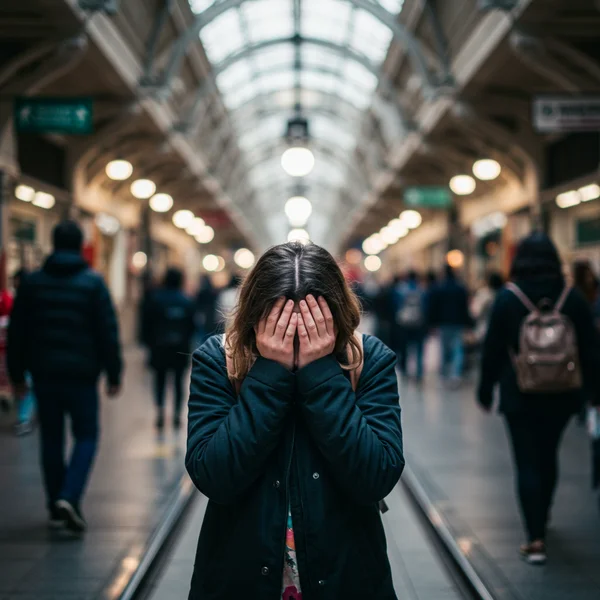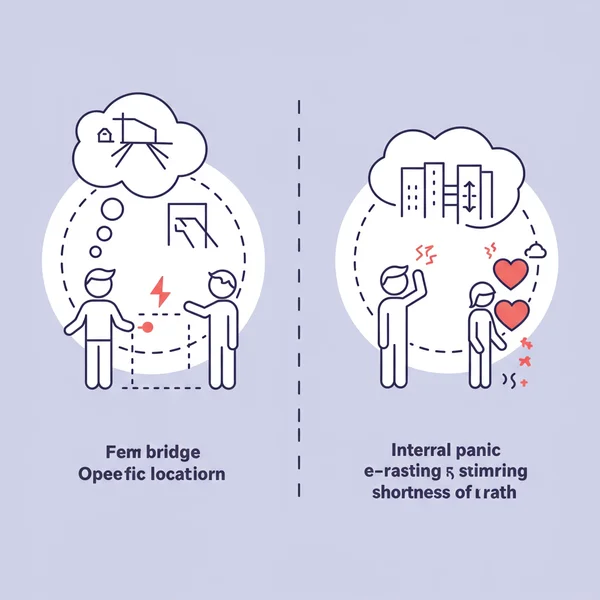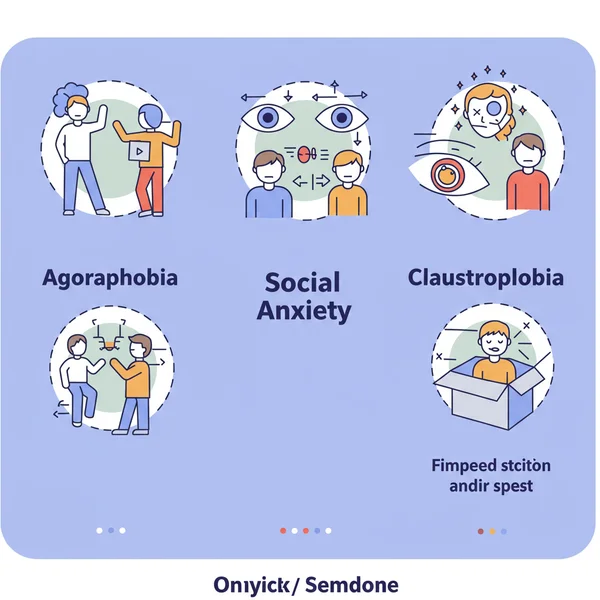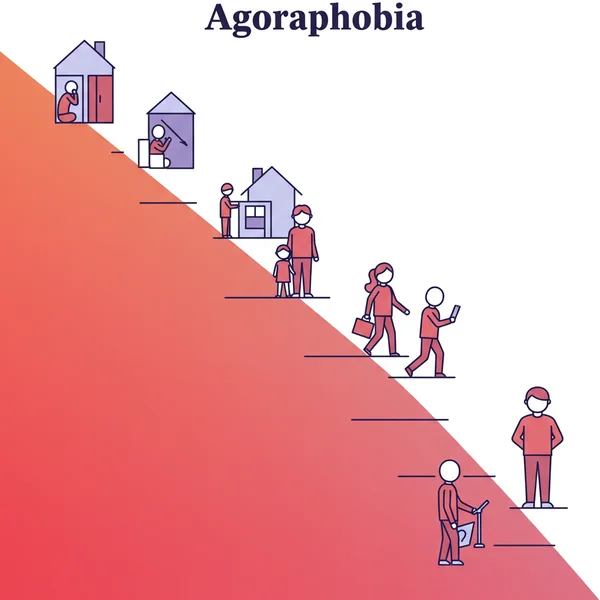Agoraphobia Test: Distinguishing It From Other Anxieties
Are you grappling with a fear that limits your life, but unsure what it is? Many quietly wonder, "How do I tell if I'm developing agoraphobia?" This guide aims to clear the confusion by differentiating agoraphobia from other anxieties, helping you understand your experiences and take steps toward reclaiming control. The journey to understanding begins with knowledge, and a great starting point is a free agoraphobia test designed to offer private, initial insight. If you're ready to explore your feelings in a safe space, you can start your self-assessment at any time.
Agoraphobia Definition: What Exactly Is It?
The term "agoraphobia" is often misunderstood as simply a "fear of open spaces." However, its agoraphobia definition is far more nuanced. At its core, agoraphobia is an anxiety disorder characterized by an intense fear and avoidance of situations where escape might be difficult or help might not be available if you experience panic-like symptoms or other incapacitating or embarrassing sensations.
This fear isn't about the places themselves but rather the terror of losing control in them. It's the "what if" that drives the avoidance: "What if I have a panic attack in the middle of this crowded mall?" or "What if I feel dizzy on this bridge and can't get off?" The anxiety is often out of proportion to the actual danger posed by the situation.
Core Symptoms and Diagnostic Criteria
To better understand this condition, it helps to look at the agoraphobia diagnosis criteria used by mental health professionals. A person with agoraphobia experiences marked fear or anxiety about two or more of the following five situations:
- Using public transportation (e.g., buses, trains, ships, or planes).
- Being in open spaces (e.g., parking lots, marketplaces, or bridges).
- Being in enclosed places (e.g., shops, theaters, or cinemas).
- Standing in line or being in a crowd.
- Being outside of the home alone.
The individual fears these situations because they believe escape would be difficult. This leads to active avoidance, needing a companion, or enduring the situation with intense fear. This pattern of fear and avoidance is persistent, typically lasting for six months or more.
Common Situations Avoided by Those With Agoraphobia
Beyond the clinical criteria, the reality of living with agoraphobia means navigating a world that feels filled with potential traps. Common avoided situations extend to everyday activities that many take for granted. This can include trips to the grocery store, attending concerts, going to the movies, or even just taking a walk around the block. For some, the fear can become so pervasive that they feel safest only within their own homes, which is why agoraphobia is often linked to the concept of a fear of leaving the house test.

Agoraphobia vs Panic Disorder: Key Differences
One of the most common points of confusion is the overlap between agoraphobia and panic disorder. While they are closely related and can occur together, they are distinct conditions. The key difference lies in the focus of the fear. Taking an agoraphobia symptoms test can help you reflect on whether your fear is tied to specific situations or the panic itself.
A panic disorder diagnosis is characterized by recurrent and often unexpected panic attacks. These are sudden episodes of intense fear that trigger severe physical reactions when there is no real danger or apparent cause. After experiencing them, a person with panic disorder develops a persistent worry about having more attacks.
The Role of Panic Attacks in Agoraphobia
Panic attacks play a central role in agoraphobia, but their function is specific. For someone with agoraphobia, the fear is tied to having panic-like symptoms in a place where they feel trapped. They may or may not have a full-blown panic disorder. The avoidance behavior is a direct strategy to prevent the possibility of having those terrifying symptoms in a public or inescapable setting.
In contrast, someone with panic disorder might have panic attacks anywhere, even in a "safe" place like their home. Their primary fear is of the attack itself, not necessarily the location where it might occur.
Distinguishing Fear of Situations vs. Fear of Panic Itself
Here is the crucial distinction:
- Agoraphobia: The fear is primarily of the situation or place due to the anticipated difficulty of escaping if panic symptoms arise. The situations are the triggers.
- Panic Disorder: The fear is primarily of the panic attack itself. The individual fears the loss of control and the terrifying physical sensations, regardless of where they are.
An online agoraphobia test helps parse this by presenting scenarios that directly probe your reactions to specific places and circumstances.

Beyond Panic: Agoraphobia vs. Social Anxiety & Claustrophobia
The confusion doesn't stop with panic disorder. Understanding what can agoraphobia be mistaken for is vital for gaining true clarity. Social anxiety and claustrophobia are two other conditions that share overlapping symptoms but have different underlying fears.
How Agoraphobia Differs from Social Anxiety
Social anxiety disorder is driven by an intense fear of being judged, scrutinized, or negatively evaluated by others. A person with social anxiety might avoid crowds or public speaking because they fear embarrassment or humiliation.
The key difference is the reason for the avoidance.
- Social Anxiety: Avoids social situations due to fear of social judgment. ("What will they think of me?")
- Agoraphobia: Avoids crowded situations due to fear of being trapped during a panic episode. ("How will I get out of here if I start to panic?")
A person with agoraphobia might be perfectly comfortable having a few friends over at their house but terrified of going to a crowded mall with those same friends.
Agoraphobia vs. Claustrophobia: Understanding the Contrasts
Claustrophobia is a situational phobia involving the fear of enclosed or confined spaces, like elevators or small rooms. While agoraphobia can include a fear of enclosed spaces, it is much broader.
The defining difference lies in the scope of the fear.
- Claustrophobia: The fear is specific to confinement and the inability to get out of a tight space.
- Agoraphobia: The fear is broader and can include both enclosed and open spaces. The core fear is about being unable to escape any situation where panic might occur, not just enclosed ones.
If you are questioning your feelings, a confidential am I agoraphobic quiz can provide a valuable, private reflection point.

Exploring the Spectrum: Types and Severity of Agoraphobia
Agoraphobia isn't a single condition; it exists on a spectrum with different types and varying degrees of severity. It is not an all-or-nothing diagnosis. People experience it with varying degrees of severity, which impacts their daily functioning in different ways.
Understanding Varying Levels of Agoraphobia Severity
Agoraphobia can range from mild to severe. A person with mild agoraphobia might feel significant anxiety in triggering situations but still force themselves to endure them. Someone with moderate agoraphobia may have a more restricted life, avoiding many places and relying heavily on safety behaviors. In severe cases, an individual might become almost entirely housebound, unable to leave without extreme distress. Understanding where you might fall on this spectrum is a crucial part of self-awareness.
Can You Be Agoraphobic and Still Leave the House?
Many people ask if they can be agoraphobic and still leave the house, and the answer is a resounding yes. Many people with agoraphobia leave their homes regularly. However, they may do so with intense internal anxiety or by using "safety signals"—like only traveling with a trusted person, carrying medication, or staying close to exits. The fact that someone can leave their house does not invalidate their struggle with agoraphobia. The internal experience of dread and fear is the defining factor.

Find Clarity: Take Your Agoraphobia Test Today
Feeling less alone and more in control often starts with understanding. By recognizing the distinctions between agoraphobia and other anxiety conditions, you're already gaining valuable insight into your own experiences, opening doors to effective coping strategies. If this guide has spoken to you, consider taking the next step towards clarity. While not a medical diagnosis, a free agoraphobia test offers a confidential, scientifically-informed way to assess your symptoms and gain preliminary insights. Ready to explore your feelings? Take our free confidential test and begin your journey toward greater self-understanding today.
Frequently Asked Questions About Agoraphobia and Testing
How do you test for agoraphobia?
A formal diagnosis of agoraphobia must be made by a qualified healthcare professional, such as a psychologist or psychiatrist, through a clinical interview. However, a great preliminary step is using an online agoraphobia screening test. These tools use questions based on established diagnostic criteria to help you identify potential signs and symptoms, giving you a structured way to understand your experiences before seeking professional help.
What can agoraphobia be mistaken for?
Agoraphobia is most commonly mistaken for Panic Disorder, as the two often co-occur. It can also be confused with Social Anxiety Disorder, where the fear is of social judgment rather than being trapped during a panic attack. Additionally, specific phobias like Claustrophobia (fear of enclosed spaces) can seem similar, but agoraphobia's fear is broader, encompassing various situations where escape might be difficult.
Is there a spectrum for agoraphobia?
Yes, absolutely. Agoraphobia exists on a spectrum of severity. Some individuals may experience mild anxiety and avoid only a few specific situations, while others may face moderate restrictions in their daily life. In the most severe cases, individuals may become completely housebound. It's not a one-size-fits-all condition.
What are the levels of agoraphobia?
While there are no official "levels," clinicians and individuals often describe agoraphobia in terms of mild, moderate, and severe. Mild agoraphobia involves experiencing anxiety but still managing most daily activities. Moderate involves significant avoidance that impacts routines. Severe agoraphobia involves extensive avoidance that can severely limit a person's ability to work, socialize, or even leave their home.
Can you be agoraphobic and still leave the house?
Yes, many people with agoraphobia can and do leave the house. They often do so with great difficulty, experiencing intense anxiety, or by relying on safety behaviors, such as being accompanied by a trusted person, staying on a familiar route, or avoiding peak hours. The diagnosis is based on the presence of intense fear and avoidance, not just on whether a person is completely housebound. An agoraphobia self-assessment can help clarify these patterns.